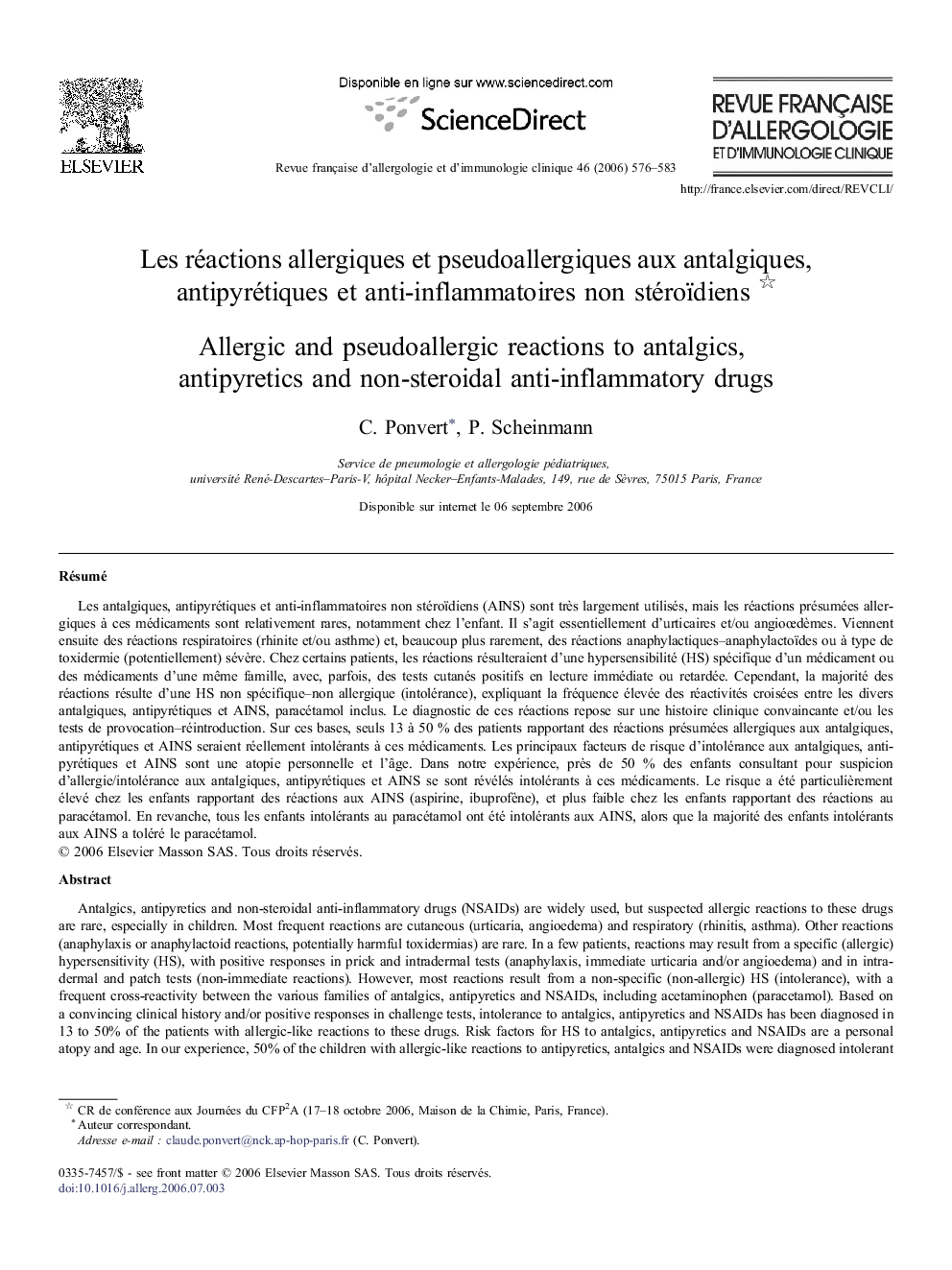| Article ID | Journal | Published Year | Pages | File Type |
|---|---|---|---|---|
| 2770483 | Revue Française d'Allergologie et d'Immunologie Clinique | 2006 | 8 Pages |
Abstract
Antalgics, antipyretics and non-steroidal anti-inflammatory drugs (NSAIDs) are widely used, but suspected allergic reactions to these drugs are rare, especially in children. Most frequent reactions are cutaneous (urticaria, angioedema) and respiratory (rhinitis, asthma). Other reactions (anaphylaxis or anaphylactoid reactions, potentially harmful toxidermias) are rare. In a few patients, reactions may result from a specific (allergic) hypersensitivity (HS), with positive responses in prick and intradermal tests (anaphylaxis, immediate urticaria and/or angioedema) and in intradermal and patch tests (non-immediate reactions). However, most reactions result from a non-specific (non-allergic) HS (intolerance), with a frequent cross-reactivity between the various families of antalgics, antipyretics and NSAIDs, including acetaminophen (paracetamol). Based on a convincing clinical history and/or positive responses in challenge tests, intolerance to antalgics, antipyretics and NSAIDs has been diagnosed in 13 to 50% of the patients with allergic-like reactions to these drugs. Risk factors for HS to antalgics, antipyretics and NSAIDs are a personal atopy and age. In our experience, 50% of the children with allergic-like reactions to antipyretics, antalgics and NSAIDs were diagnosed intolerant to these drugs. Risk was high in children reporting reactions to NSAIDs (aspirin, ibuprofen) and lower in children reporting reactions to paracetamol. All the children intolerant to paracetamol were also intolerant to NSAIDs. In contrast, most children with NSAID intolerance were tolerant to paracetamol. A personal history of atopy and a mean age â¥Â 8 years were significant risk factors for intolerance to antalgics, antipyretics and NSAIDs.
Keywords
Related Topics
Health Sciences
Medicine and Dentistry
Anesthesiology and Pain Medicine
Authors
C. Ponvert, P. Scheinmann,
